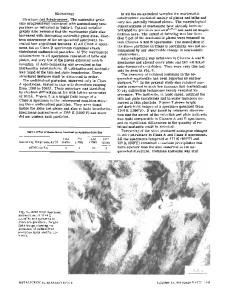Multilayer Mg-Stainless Steel Sheets, Microstructure, and Mechanical Properties
- PDF / 5,425,092 Bytes
- 13 Pages / 593.972 x 792 pts Page_size
- 54 Downloads / 373 Views
ODUCTION
MAGNESIUM alloys have an excellent strength-toweight ratio, which makes them an interesting alternative in many lightweight applications, especially for the transportation industry and portable devices. However, their strong anisotropy, low yield and ultimate tensile strength and high chemical reactivity are major issues limiting the extensive use of Mg in industrial applications. To overcome these mechanical limitations, different routes have been examined. Many researchers have attempted to improve mechanical properties by changing the alloying composition, while others have attempted to optimize the manufacturing process and the resulting microstructure. In a different approach, some researchers have attempted forming composites to obtain enhanced properties. Different Mg composites have been introduced; some of which exhibit excellent properties. Mg matrix composites can be categorized into two different groups, depending on whether a reinforcing material is dispersed in the Mg matrix or whether Mg is surrounded by reinforcement layers (laminar metallic
JUNYA INOUE is with the Research Center for Advanced Science and Technology, The University of Tokyo, Meguro, Tokyo, Japan. ALIREZA SADEGHI is with the University of Tehran, College of Engineering, School of Mechanical Engineering, Tehran, Iran. Contact e-mails: [email protected], [email protected]. ac.jp NOBUHIKO KYOKUTA is with the Nippon Steel is with the Nippon Steel & Sumitomo Metal Company, Kashima, Ibaraki, Japan. TOSHIHIKO KOSEKI is with the Department of Materials Engineering, The University of Tokyo, Bunkyo, Tokyo, Japan. Manuscript submitted March 2, 2016. METALLURGICAL AND MATERIALS TRANSACTIONS A
composites, LMCs). In the first group, usually highstrength intermetallic compounds are added to the matrix to increase the strength and fatigue lifecycle (e.g., Ti2AlC particles in Reference 1 or Si3N4 particles in Reference 2). Owing to the significant difference in the yield strength of the matrix and the reinforcing material, also the concentration of stress at sharp edges and the fact that the interfaces are not coherent, cracks can easily form and propagate in these composites during plastic deformation. Therefore, high elongation cannot be expected from these combinations. In contrast, in laminar composites the reinforcement layer usually has comparatively higher elongation and the stress is more uniformly distributed along the interfaces (e.g., Ti/Al/AZ31 in Reference 3, Al/ Mg/Al in Reference 4, and martensite/austenite in Reference 5). Nevertheless, in these composites the brittleness of the intermetallic compound at the interface becomes a factor limiting the ductility. Moreover, depending on the dispersion of the reinforcing material, Mg can be subjected to different stress states and consequently it can behave differently from when it is unreinforced. In laminar composites, the stress tensor is more complicated than that in monolayers and includes more stress components. Therefore, completely different micromechanisms mayb
Data Loading...











